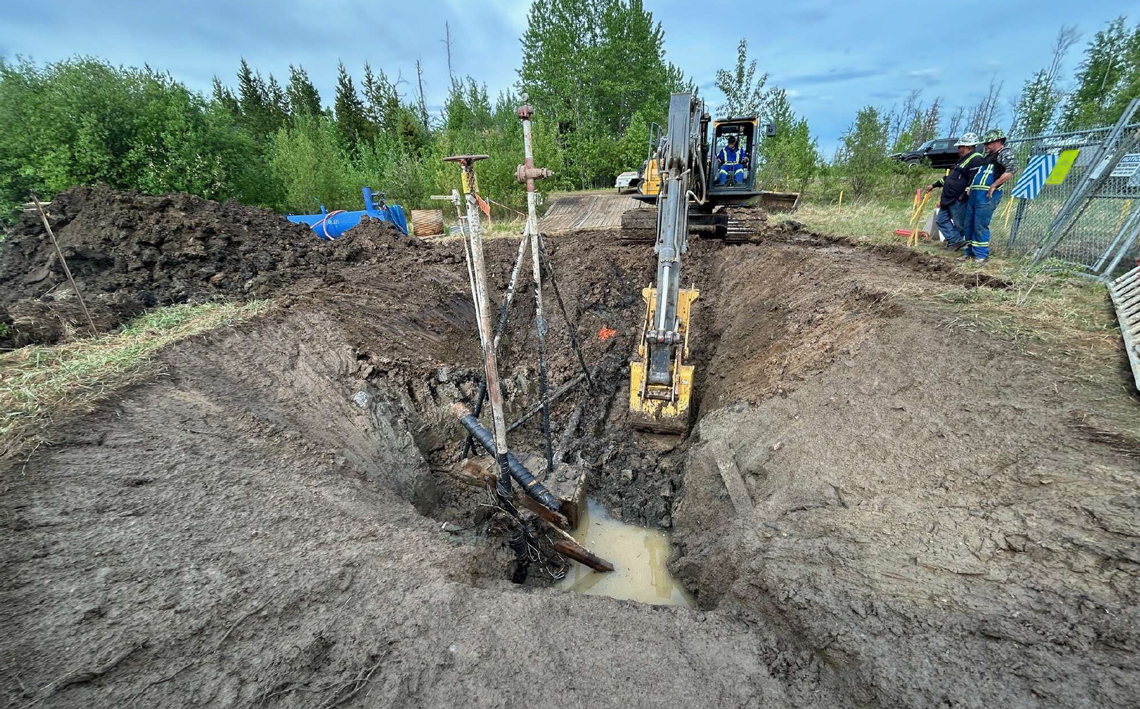| CLIENT | Confidential |
| LOCATION | Various Locations in Alberta |
| CONTRACT VALUE | >$20,000,000 |
| SCHEDULE | Start Date: August 2015 End Date: Ongoing |
PROJECT PROFILE
Since 2015, KBL Projects Ltd. has delivered large-scale Deactivation, Decommissioning, and Abandonment (DDA) program for a major North American energy transmission company as part of its ongoing pipeline infrastructure optimization and environmental liability reduction strategy.
As both prime and general contractor on multiple DDA projects, KBL has completed work at more than 100 active and legacy facilities executing isolation, demolition, remediation, and site reclamation activities under stringent environmental and safety oversight. The projects support the client’s commitment to responsible asset retirement and regulatory compliance under the Canadian Energy Regulator (CER) and CSA Z662 Onshore Pipeline standards.
SCOPE OF WORK
KBL Projects Ltd. was responsible for the safe deactivation, decommissioning, and abandonment of multiple meter stations and associated pipeline laterals across Alberta. Each facility was isolated from the live transmission system, verified for zero energy, and dismantled in accordance with regulatory and engineering specifications.
Work included the demolition and removal of meter run buildings, instrumentation shelters, cable trays, and communication infrastructure, as well as the purging, pigging, cleaning cutting, and removal or abandonment of underground piping and valves. Foundations and steel piles were excavated and removed to depths of up to 2.5 meters below grade, with affected areas backfilled, compacted, and regraded to restore natural drainage and site stability.
KBL implemented comprehensive environmental protection measures throughout execution, including soil segregation, waste tracking, spill prevention, and erosion control. All waste streams were properly manifested and disposed of at approved facilities, and over 90% of recoverable materials were recycled or salvaged. Daily field reporting, inspection and test plans, and as-built documentation ensured quality and compliance were maintained.
In addition to site dismantlement and restoration , KBL managed subcontractors, performed pre- and post-demolition inspections, and confirmed environmental closure through final verification surveys and turnover documentation.
PROJECT CHALLENGES
These programs presented several technical, environmental, and logistical challenges that required proactive planning and adaptive execution. Many sites remained partially active during the decommissioning process, which required careful coordination with the client’s operations team to ensure isolation from systems and to maintain safe working distances at all times.
Access to remote and environmentally sensitive areas posed additional challenges, particularly during winter conditions and on soft or uneven terrain. KBL mitigated these risks through detailed pre-mobilization planning, the use of matting and access control systems, and the implementation of erosion and sediment control measures to protect surrounding habitats.
Several facilities contained legacy infrastructure, including historical contamination, asbestos insulation, and Naturally Occurring Radioactive Materials (NORMs). These conditions necessitated on-site hazard assessments, specialized abatement, and disposal through licensed facilities. In addition, project documentation varied between locations, ranging from schematic drawings to full IFC packages. This required KBL to work collaboratively with client engineers to issue RFIs, verify field conditions, and ensure all scope items were accurately defined and completed.
Through early identification of these challenges and consistent communication with stakeholders, KBL was able to maintain project schedules, uphold environmental compliance and deliver each site to the required regulatory standard.
PROJECT SUCCESS
KBL’s performance throughout the program achieved measurable success in safety, environmental protection, and efficiency:
- Over 100 facility sites completed – on schedule, within budget and in full compliance with environmental and regulatory requirements.
- Sustainable Materials Management – Over 90% of recoverable metals and materials were recycled or repurposed, supporting the client’s sustainability targets.
- Zero Lost-Time Incidents (LTIs) over multiple project seasons, reflecting adherence to KBL’s HSE standards and Life-Saving Rules.
- Strong Partnership Approach – Open communication, collaborative change management, and integrated supervision ensured client satisfaction and repeat engagement.
- Replicable Delivery Model – The execution framework developed through this program has since been applied to other DDA scopes for the client across Western Canada.
RESULT
Our work on these multi-year projects demonstrates KBL’s expertise in managing complex, multi-site infrastructure retirement projects under strict environmental and safety standards. Through disciplined project management, skilled personnel, and innovative field practices, KBL continues to provide safe, cost-effective, and environmentally responsible decommissioning and abandonment solutions for major energy infrastructure operators.




